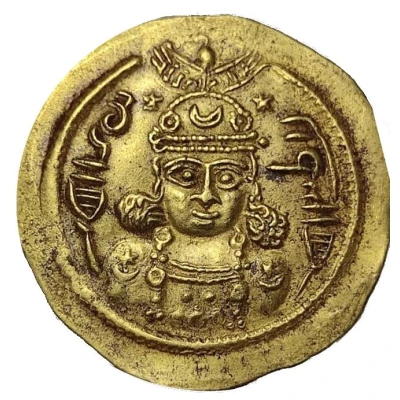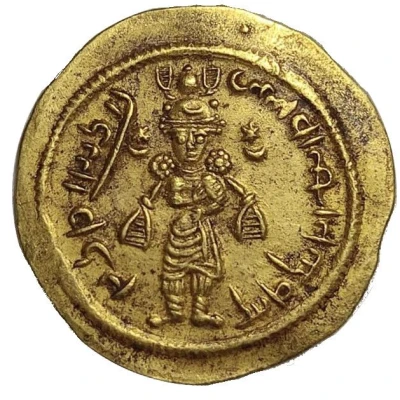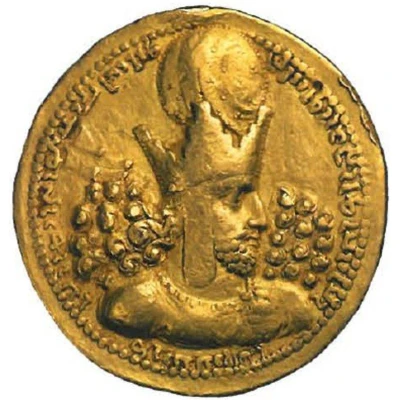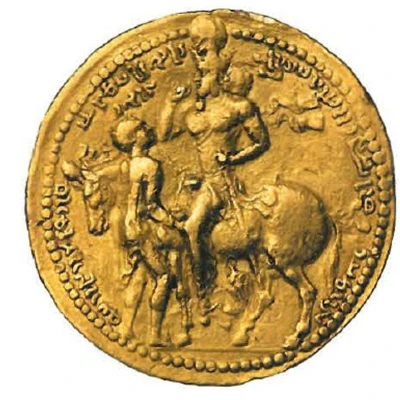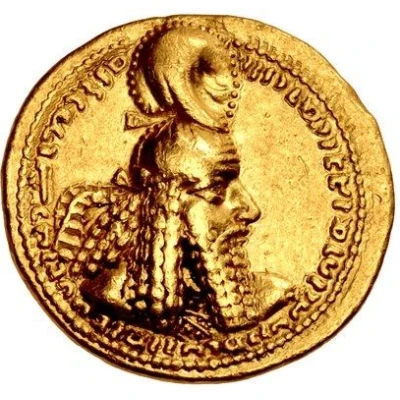
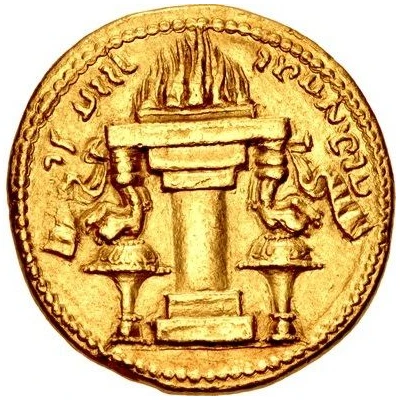

Double Dinar - Ardashir I
| Gold | 14.99 g | 28 mm |
| Issuer | Sasanian Empire (Sasanian Empire (224-651)) |
|---|---|
| Emperor | Ardashir I (224-242) |
| Type | Circulating commemorative coin |
| Years | 233-238 |
| Value | 2 Dinars |
| Currency | Dinar (224 AD-651 AD) |
| Composition | Gold |
| Weight | 14.99 g |
| Diameter | 28 mm |
| Shape | Round (irregular) |
| Technique | Hammered |
| Orientation | 3 o'clock ↑→ |
| Demonetized | Yes |
| Updated | 2024-10-10 |
| Numista | N#420312 |
|---|---|
| Rarity index | 100% |
Reverse
Legend: NWR’ ZY in Pahlavi to left, ’rthštr in Pahlavi
Fire altar (flames 1) with diadems (type R).
Script: Inscriptional Pahlavi
Comment
Between AD 233/4 and AD 238/9, Ardaxšīr (Ardashir) I, now undisputed ruler, instituted from his capital at Ctesiphon a new series of coinage, which featured him wearing close-fitting headdress with korymbos and proclaiming him as “king of kings of Iran, descended from the gods. While the majority of this new series consisted of silver drachms and fractions, Ardaxšīr also issued gold coins for the first time. A dinar, its fraction, and a double dinar were all struck in limited quantities. This gold is unusual for, except for the issue of Andragoras and the controversial Parthian and Persis gold issues, these coins were the first to be struck by the the Persians since the time of the Achaemenids. To some extent, the dinar and its fraction would eventually come to serve the same function for the Sasanians that it did with other contemporary states, in transacting large scale payments. However, like other regional states that issued such coinage, gold coins, especially larger denominations such as this double dinar provided opportunities for the ruler to enhance his power and prestige by presenting these coins as gifts to special friends and worthy subjects.
Interesting fact
One interesting fact about the Double Dinar coin is that it features an image of Ardashir I, the founder of the Sasanian Empire, on one side, and a representation of the Persian goddess Anahita on the other. This coin was minted during Ardashir's reign (233-238 AD) and was likely used as a symbol of the empire's power and influence.
